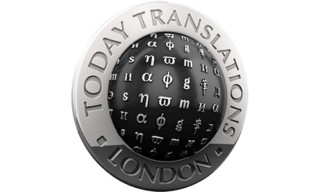Up at the very sharp end of translation services lies the requirement for the total elimination of any ambiguity or error in translated texts – in order for people to stay alive.
Stayin’ Alive
An engineer friend was once tasked with producing an illustrated online manual about health and safety issues in oil refinery installations. His client stipulated that the guide was to be written in English and would be translated into several non-English languages by local translators. Whilst the information he provided in English was entirely accurate, my friend decided that the possibility of “do not forget to replace the ignition safety cap” might, innocently, be rendered in translation as “do not replace the ignition safety cap” and cause a catastrophic explosion with the loss of thousands of barrels of crude along with several lives, he highlighted every passage containing potentially life-critical information and attached copious notes about the dangers inherent in any less-than-perfect translation. Because he does not speak any of the languages that his manual was translated into, he has his fingers permanently crossed to this day.
Casualty
Another area of potentially dangerous mistranslation lies with texts concerned with medicine and health. The need for accurate translation in highly specialised technical fields such as clinical diagnosis, surgical procedure and patient care requires significant subject-specific understanding if lives are not going to be put at risk due to a translation malfunction. It’s the sort of work that should never be allowed anywhere near automatic translation machines.
Particular care needs also to be taken in the translation of culturally specific technical texts originating in non-English languages which may also have a non-western script and come from a cultural tradition significantly removed from that of the west. China springs to mind.
China Syndrome
The embrace of traditional Chinese medicine (TCM) outside China has largely come about due to the efforts of the Chinese-American community in the US, rather than it being a direct cultural export from China. Yet only a few American universities that teach TCM require Chinese-language proficiency and only a handful of Chinese medical texts have so far been translated into English.
The room for confusion is considerable even if the area of concern only deals with acupuncture, herbs, tree bark, massage and nutritional therapies rather than say, oncology, renal dialysis or neurosurgery. Nevertheless, it is a good sign that steps have recently been taken to make the process of TCM more accessible to western consumers.
Researchers at UCLA’s Centre for East-West Medicine have recently published guidelines for the translation of TCM texts, hoping to spur greater collaboration and standardisation across the practice. Their work was recently reported in Asian Scientist.
The Right Stuff
Such work underlines that the essence of a good translation is the process of simply “getting it right”. And getting it right is not about translating texts word for word. Good translation requires in-depth subject-specific knowledge on the part of the translator, together with sensitive cultural nuancing and the ability to convey complex ideas with 100% accuracy. Otherwise, people may die.

